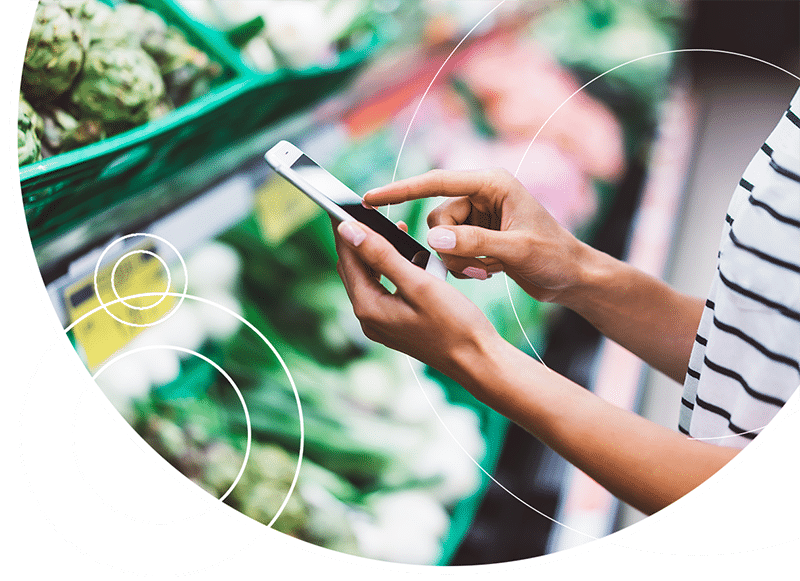Remember going into a store and seeing this famous iconography on the door: No shoes. No shirt. No service. Believe it or not, some retailers still think this is true. As I was reflecting on where digital is going with customers these days, it suddenly occurred to me just how much the retail industry has changed—just consider this out-dated and ridiculous phrase.
It’s obvious that the phrase doesn’t have much pull in the eCommerce world of today. We can easily buy whatever product we want from a retailer without shoes, or shirt, or anything else for that matter. No one checks, although I do have this conspiracy theory that Alexa secretly watches me order stuff from Amazon, so I’m careful what I wear around Alexa—but that’s a whole other article for another day. The other not quite so obvious part of this is the notion that somehow a retailer gets to call the shots, or the terms around how customers are going to do business.
It doesn’t work that way anymore. Retailers who continue to believe that they are in charge of the customer and how business will transpire are the ones stuck in the mud. I bet if we went back a year and looked at the retail brands that closed, there would be a correlation between those retailers who are known to be difficult to do business with and the number of stores they closed with the degree of difficulty they inflicted.
Personalization and loyalty mean a lot these days to customers. They are hot trends, but why? Is it because the technology exists that enables retailers to offer the kind of perks that are needed? Or is it because the modern shopper has changed the rules?
The customer demands “that you know them, that you show you know them, and that you value them.” The quickest and easiest way to do that is to offer some form of loyalty points. Something that at least puts the decision on how they want to be rewarded in the hands of the customer. It’s a start. It might not be enough, but honestly it’s better than the expectation that nothing can be offered, and that just because someone isn’t wearing shoes they should be asked to leave, that they will be remorseful, head home, put shoes on, and come back. Millennials and younger want experiences. They want the ability to boast about the cool thing the retail brand did and how they got something, but their friends didn’t.
Personalization is essentially at the heart of this. So if a retailer is getting ready for a digital project or is ready to tweak what they already have, they need to ask the question: how easy is it to do business with my brand? How do we treat the customer? The journey to personalization isn’t necessarily about the implementation of technology to help create those connections by understanding which customers want what kind of offers. It’s deeper than that. Of course, personalization is a perfect way to show customers that you know them, but does it address the second part of their need: that you value them?
Let me draw an analogy to travel ticket rewards. We have all heard the stories about how these programs have changed. Not that long ago, I tried to book a flight for my family of five on a major Canadian travel rewards program to Spain. The program wanted 900,000 miles for my five tickets, plus an additional $3,800 in taxes, gas surcharges and service fees. I am a frequent traveler, averaging almost 200,000 miles of accumulation per year. That means it would have taken me five years to save up for those miles, since the average person earns about 25,000 miles per year, this is 10 years of accumulation.
Don’t get me started on the fact that I found a low fare alternative on the same airline for all five of us for $3,100—$700 less than the fees for my supposed free travel. How does this show that I’m valued? It actually made me feel that the brand was happy to take my money, but when I wanted something all of a sudden I was a nuisance.
Value is key to the next phase of a retailer’s personalization and digital journey. This is the place where they get to make the wow happen. The magic in the experience. The fairy dust that when appropriately sprinkled makes the retailer’s brand soar. Think of all the opportunities to deliver a special experience: a concierge that helps the customer, a secret way for the customer to pay and leave, an easy way for the customer to reserve inventory and, even better, a special way to send the purchases home.
Not only is it the personalized and special offers that make sense, but also it’s the value inherent in the brand: how the customer was treated as special to build loyalty. I’m talking big L loyalty here. Little L is the points and rewards style of recognition. It has a place. If it can be tied to gamification then I think that’s not a bad start. Technology can help create those magic moments of wow so that customers will react.
It’s no secret these days, retail is not dead. Boring retail is dead. Marketing isn’t dead, but mass marketing is dead. Oddly enough, everyone seems to be worried about eCommerce giants killing off retail and nothing could be further from the truth. The eCommerce giants became big because they offered the same boring retail experience that in-store brands that don’t get it did. Except the giants made it easy, they made it so that the customer could have no shoes or shirt and still get service with the product arriving at the door.
Change the rules. Personalization and loyalty experiences are where the in-store brands get to change the rules. But how is an on-line retailer going to give a personal touch? It’s like asking for a handshake from a speakerphone: you can say you did it, but both parties know it never happened.
Perhaps this is not easy for the retailer to set up, but believe me when I say retailers have to do it because otherwise they will have no personalization, no loyalty, no customers.

Allan Zander
CEO
Allan Zander is the Chief Executive Officer at omNovos and a regular keynote speaker on the subject of Digital Transformation. Allan loves the entire process around the “art of the possible” - whiteboard sessions where he gets to turn problems into ideas, ideas into solutions, and solutions into businesses. Connect with him on LinkedIn and Twitter to start a discussion or even discover a new dinner recipe.

